The Good Life Review
The Good Life should have been my jam. Pitched to crowdfunders as what I can only summarize as an “everything game”, fans of Hidetaka Suehiro (better known as “Swery”) had been looking forward to this quirky-looking life simulator RPG. Some pretty glaring issues with his games aside, I more or less fell into that Swery fan category. Swery gained something of a cult following with Deadly Premonition, a game overflowing with soul as much budgetary-induced jank.
I’m a big jank connoisseur; some of my favorite games were both made for cheap and helmed by creators who love to test the patience of the audience. The gall, the sheer confidence of using extensive amounts of tedium in an already weak foundation just grabs my interest like few games are able to do. Both Deadly Premonition games are exactly this to me (despite the story’s having their fair share of problematic content that actively work against the intent) - open world titles filled with charming characters and enough ambition to make up for the technical flaws. The Good Life, at its best, is certainly that. Hell, at its best this game frequently had me thinking that it could be one of Swery’s most interesting titles.
As a whole, however, it wasn’t that at all. Far from it, and I’ve spent months trying to articulate why The Good Life just didn’t work for me. Bare with me, Swery fans.

The game calls itself a Debt-Repayment RPG, but I’d consider it more of a self-employed journalist simulator. Photographer Naomi Hunter has a mountain of debt she needs to pay off, which serves as the catalyst for the story. She comes to visit the quiet English village of Rainy Woods to uncover its secrets and report them to the company she works for back in New York. Doing side quests, solving mysteries, all while slowly chipping away at your debt? That sounds like a unique, free-form, and Animal Crossing-esc relaxing game on paper.
Unfortunately, for those going in expecting that, your debt only decreases based on main story quest rewards. I don’t necessarily view this as an explicit flaw, but I find it weird that pre-release marketing pushed the debt angle so hard. Regardless, if a game accomplishes being what it is designed to be instead of what it claims to be, that’s more than enough for me. I think The Good Life almost pulls off the former, but fumbles it with frustrating results.
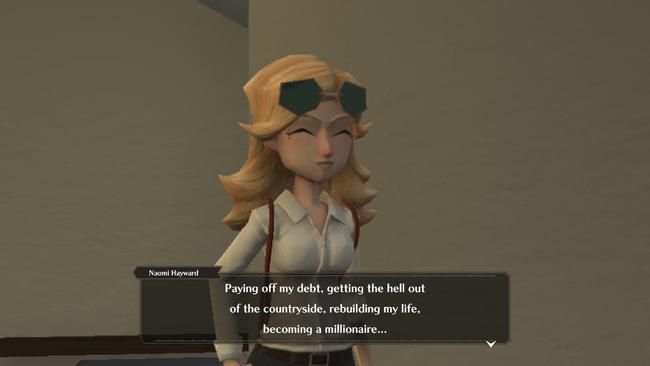
Money is central to everything you do, and I spent most of my time being broke. You need money to buy food, buy medicine, go to the doctor if you get any physical ailments (sickness, toothaches, hangovers, etc), teleport to fast travel nodes, fix your flimsy camera, upgrade your photo cloud server storage, upgrade your house, and a lot more. Money, in my experience, was hard to consistently come across. Side quests are where you get most of your money, but most side quests also cost money to complete.
In the most egregious case, a lengthy side quest chain from the owner of Rainy Fall’s hotel involves you going to campsite kitchens attached to fast travel nodes around the world. He wants you to open them all, and they cost around 100-200 bucks each. I’m aware the currency is English, not the American dollar, but as an ignorant American, I’ve already forgotten it. Once unlocked, you can cook meals from any ingredients you’re carrying in your bag. It seems like a worthwhile thing to unlock, since the map is pleasantly large and you’ll definitely want those stations up and ready if you find your Naomi starving with town nowhere in sight. You figure this quest line would be an easy way to get some money, or that the man would give you money to help, but he doesn’t. You have to spend your own for each kitchen, and the reward was less than what I went through to do it. Not wanting to spend more money when I could have used this to buy things to keep Naomi’s health from failing, which it loves to do often, so I passed on it.
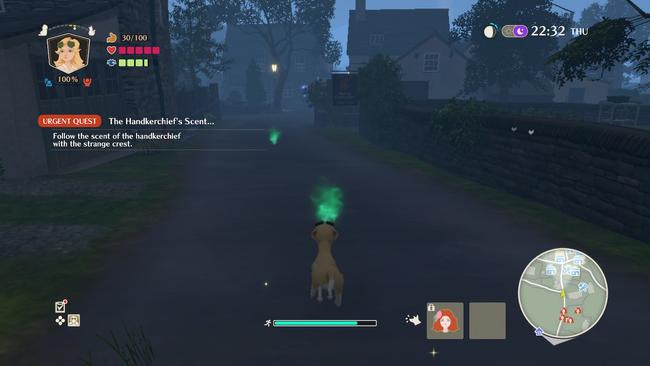
The open-world is relatively adequate, with enough variety in locations and plenty of secrets to uncover. With the polygonal aesthetic they were going for, I’d even make the bold claim that the world design even looks beautiful. However, despite how pleasant it can be to explore, it is not free from glaring and annoying flaws. The first is true for any version of the game, and its movement. Naomi moves incredibly slow on her own, and running too much appears to decrease her health by adding too much stress. By the time the world opens up for exploration, Naomi will have unlocked two animal forms: a dog and a cat. The dog form can hunt, urinate, lock onto scents, and sprint the fastest of Naomi’s three forms. The cat form can hunt, climb up buildings, and jump high. The cat form is far less useful, so I spent most of my time in the open world as a dog before I unlocked the fastest form of transportation.
Deadly Premonition has cars, Deadly Premonition 2 has skateboards, and The Good Life has sheep. You can collect, take care, and nurture the stats of several sheep after a certain main story quest, which really cuts back on how slow it is to get to places. With a click of a button, your main sheep will immediately appear by your side in almost any location. I would not recommend really going out to explore until you unlock a sheep, is what I would say if there wasn’t another huge downside to sheep travel. Every time you hit the run button while on the sheep, Naomi will use the exact same voice line without fail. Nothing quite ruins feeling the artificial air of the English countryside by hearing Naomi scream “YEAAAAAAAAAAH BAYYBEEEEEEE!” This line is also sprinkled in as an occasional vocal grunt during many cutscenes, so you’ll hear it a lot. It's mind-numbing to listen to for hours on end, and I needed to stop playing the game with sound, and I don’t know why it wasn’t caught.

If you’re playing on the Switch, there’s an extra layer of pain added for world traversal. The performance of this version is rather poor. Whether in town or on the field, the game can just not keep a consistent framerate. Now, as someone who played Deadly Premonition 2 on launch and got brainwashed enough to enjoy the single-digit framerate, I’ll say The Good Life is at least better than that. It’s far from stable, and for some reason, its performance issues stood out to me far more. In the plethora of patches that have dropped since I’ve started playing, I did not notice a significant improvement. The visuals aren’t good enough to justify how badly it runs either. Outside of cutscenes, the models look blocky in ways clearly not intended. In both docked and undocked it can be rough on the eyes.
The Switch is the perfect system for comfort gaming in my opinion, and I leaped at the chance to cover this game on this exact system. Did I get used to it? Of course. Hell, I think it can mostly be “fine”. Am I a good metric for gauging adequate performance in games? Absolutely not. Play The Good Life on any other platform than the Switch.
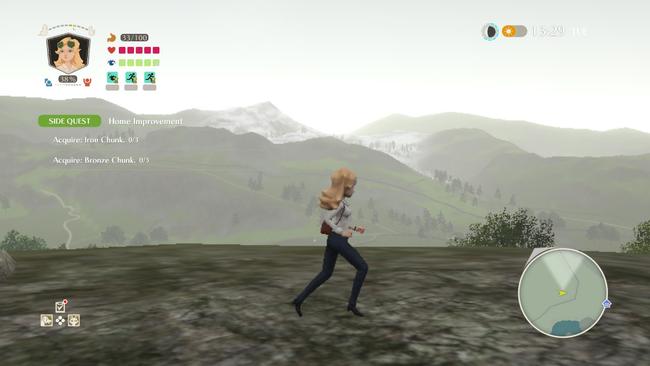
I have a lot of issues with this game, but most of those didn’t come up right away. In the early hours, I actually loved the balancing act of poverty and stability. Draining your money bit by bit, all with the hope of keeping yourself alive and afloat? Constantly needing to spend money on health emergencies while you try to save up? It felt nostalgic! I ignored the main story in my first 10 hours to simply explore. I grinded materials to upgrade my dingy cottage to a nice village house. I took photos of anything I could see and studied the residents’ routines and personalities. Every person in the game’s world has a weekly schedule, and they’ll follow it to live out their own lives. This feeds in pretty well to the photo mechanic, in which you’re given small goals every day for specific photos that push you towards exploring new areas and meeting new people. Every resident of the main town has several quests for you, and if you focus just on these you’ll find yourself with more than enough to do.
Too much to do, in fact, but none of it is very engaging - partly for gameplay reasons, but also for more important reasons I’ll get into later. The gameplay part holds the most immediate value in this discussion because I’d say the quests are horribly designed. I need to mention that The Good Life still receives frequent updates, so unfortunately talks about glitches or poorly designed quest UI are subject to change. Quests are both aimlessly vague, yet needlessly exact in how you solve them. You are lucky if you are given an idea of where you need to go, and then even luckier if you aren’t left befuddled when the game stares blankly back at you when trying to turn it in. When you do know exactly what you need to do, some quests are so specific that you are left waiting for up to an in-game week.
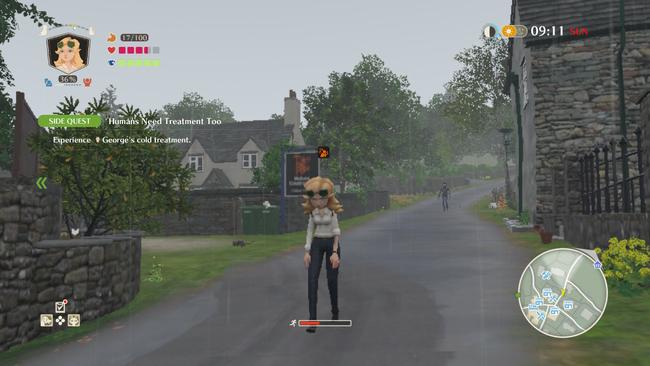
The biggest sin of the gameplay loop, in my opinion, is clothing. As soon as I found out there was a large list of clothing and accessories to apply to Naomi I got excited. Fun fact, I only play Pokemon games now exclusively for the fashion. I live for this kind of stuff in RPGs, especially when it can offer character-specific stat increases. So after I had spruced up my living space, I eagerly went to the tailor to figure out how I could deck Naomi out in the best outfit.
I gave up on it quickly when I realized the whole system requires an obscene amount of grinding for materials. What's worse is that after you waste a lot of time finding and gathering everything you need, it still costs a lot of money to make the clothing items. And good luck finding them, because you’re given no hints on how to figure out anything. It’s infuriating when this should have been the one mechanic in the game that should have not been so overdesigned. Every single part of the main gameplay loop is meant to convey stress, and this is the worst of all of them. It’s also where I officially gave up on the game’s side content.

Main quests are given more attention and love from the developers but aren’t free from annoyances. I don’t think I liked a single one of the minigames sprinkled throughout the main story. The drinking one in particular is so bad that it can lock you in place until you figure out how to master the poor controls. You can reload an autosave, but everything you had to do to get to the end of that quest line was so tedious that I just spent half an hour miserably failing it. Another agonizing one was a dark maze you had to explore, with platforming parts that can kill you. If you die at any point in the game, you are sent back to town and lose a chunk of your money. The time needed to make it back to where you are,- and even load the save to make this specific jump and not waste time loading, - made me sour on the game fast. It also doesn’t help that mysteries that provide context for these main questlines have no significant closure, making it all feel pointless.
I think one of the most disappointing aspects of The Good Life is that it doesn’t even have a good story to fall back on. Every aspect of it feels undercooked, unfocused, and limp. I felt no urge to help these people because it was immediately obvious that they were two- dimensional caricatures with no real depth. Swery’s games always featured wacky people to inhabit his worlds, but The Good Life’s cast just doesn’t hold a candle to his past works. They’re certainly wacky, but they feel overall boring and uninteresting.
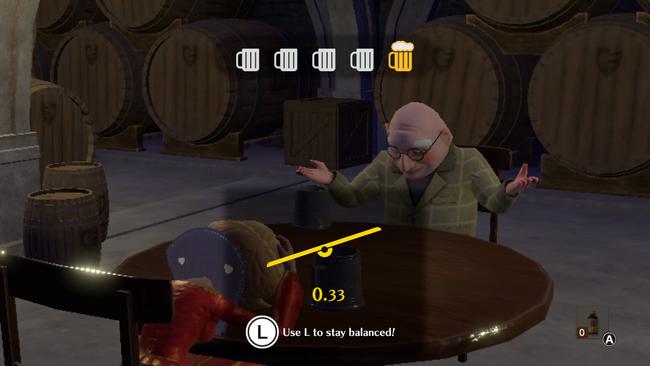
The dialogue itself is fine, but I just couldn’t get invested in the lives of any of these people. I don’t even remember most of their names. This hurts the story as well, as it made their appearances to only get an eye roll out of me. If the characters were good, or even fun, I’d be far more forgiving. When I hit credits in The Good Life I felt like I gained nothing outside of a few laughs here and there. The intriguing mysteries set up by the prologue purposefully go nowhere, and the subversion has no message behind it. It tried to be about too many things, yet had nothing really to say.
I typically love weird indie games, and this really should have been the game for me. I wanted to love it, and have been eagerly awaiting for its release since the announcement. Alas, it didn’t even become an enjoyable experience despite the faults, and the jank wasn’t really charming this time. It just wasn’t, and I’ve spent months feeling let down while playing it. Maybe one of the many upcoming updates will fix my problems, but in the current state, it's a hard game to recommend.

I really wish The Good Life wasn’t a constant tug of war match. A series of steps forward, and equal steps back. I frequently would find myself loving the richness and detail of the setting, only to be taken out of it by an annoying gameplay mechanic. It overstays its welcome, and rides what it does well out thin. If you can get it on sale or on Game Pass, I’d say you might as well give it a shot. It’s not devoid of positives, but it ends up being painfully average at best. While I hope Swery’s supposed collaboration with Suda51 will be good, I don’t think I will be returning to Rainy Woods.